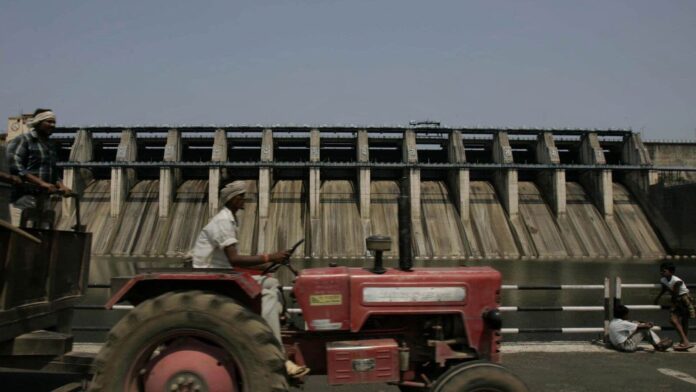It has done a good job on important economic challenges, such as ensuring the government’s fiscal health and driving investments for growth. But it failed to initiate programmes to deal with structural problems brought to the fore by farmers from Punjab, Haryana and western Uttar Pradesh. This is unfortunate.
The finance minister quoted Telugu playwright Gurajada Appa Rao as saying, “A country is not just its soil, a country is its people.” True, but sons of the soil have been crying out for solutions to farming issues and an impending climate disaster.
The finance minister also said that ‘Viksit Bharat’ envisioned farmers making our country the “food basket of the world.” Yes, of course. But for achieving this, one needs to address distortions of our agricultural markets.
Also Read: Himanshu: Will the budget’s proposals help revive India’s rural economy?
Adam Smith famously said, “It is not from the benevolence of the butcher, the brewer, or the baker that we expect our dinner, but from their regard to their own self-interest.” That self-interest would have been best served by initiating market reforms. Further, the finance minister said that the government considered agriculture one of India’s four powerful engines of growth, and that reforms would fuel this engine.
But where are the reforms?
The budget did announce productivity-related initiatives, such as a national mission on high yielding seeds, a five-year mission for cotton productivity and a National Institute of Food Technology, Entrepreneurship and Management. There are also steps such as enhancing the limits on Kisan credit cards and boosting the supply of urea through investments in fertilizers. However, these are all technology- and supply-driven initiatives. What the agricultural sector desperately needs are market reforms.
It is a stylized principle in economics that interfering with price signals creates unintended consequences. A bold initiative is needed to assure farmers comprehensive direct benefit transfers (DBTs) in lieu of minimum support prices (MSPs) and subsidies for power and fertilizers. This substitution will benefit the economy in general, apart from farmers.
First, while the reach of MSPs is limited, DBTs can benefit all farmers and sharecroppers. Second, a fixed DBT amount per household is more equitable, as poor farmers benefit equally.
Third, once a comprehensive DBT system replaces MSPs and input subsides, market prices will send farmers signals for the optimal use of inputs and choice of crops. This will help check environmental damage caused by the excessive use of subsidized inputs and India’s lopsided growth in the production of certain crops.
Finally, payment delays and leakages from MSP disbursement will be avoided, as DBTs will take place quickly and periodically, going directly into the Jan Dhan accounts of individual farmers.
Also Read: Indian agriculture needs support. Reform farm prices at the very least.
Also, farmers must be allowed to sell their produce anywhere to get better prices. Limits on the stockpiling of farm produce should be ended too and contract farming promoted. This will facilitate timely supply of raw materials and avoid the financial losses and grain spoilage that occur through Food Corporation of India storage arrangements.
These changes can be wrought through a structural adjustment programme in which an adjustment period is given to the beneficiaries of existing policies. A staggered approach is better than sudden policy changes of the kind introduced by the government during covid. For example, Agricultural Produce Market Committees (APMCs) generate yearly revenues that run into thousands of crores.
So, just as states were compensated for five years for losses arising out of the creation of a unified goods and service tax system, APMCs can be compensated for their revenue losses if farmers sell their produce elsewhere.
Similarly, market reforms could be staggered across different farm commodities. They could first be introduced for fruits, vegetables and horticultural crops, as these have no MSPs. Thereafter, they can be introduced for cash crops, such as cotton and sugarcane; followed by millets, pulses and oilseeds; and finally, for cereals like wheat and rice. The adjustment plan can be spread over 5-7 years, so that there are no surprises.
These changes will have to be initiated within the contours of cooperative federalism. Towards this, an Agricultural and Food Marketing Council (AFMC) may be set up. It should be chaired by the Union agriculture minister and have the agriculture ministers of states and Union territories as members. Since participation in multilateral agricultural trade negotiations at global forums is entrusted to the Union commerce ministry, its minister should also be part of the AFMC.
Also Read: Second shot: Could cooperative federalism revive Indian farm reforms?
The farm reform bills approved by India’s Parliament in 2020 had touched a raw nerve among state and farmer organizations, as they weren’t discussed by a parliamentary standing committee. Consulting panels with representatives from opposition parties, state governments, technocrats and agricultural experts could aid consensus formation. This would assure stakeholders that their views are being considered and the government isn’t pushing changes through.
Given the government’s fresh mandate, the budget could have laid a foundation for such bold reforms. Unfortunately, it reminds us of the adage, “Nothing is more expensive than a missed opportunity.”
The authors are, respectively, dean (faculty), Indian Institute of Management Ahmedabad and vice president, Pune International Centre.
#Budget #missed #opportunity #biggest #cost #burden #India #bear
